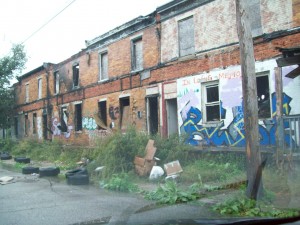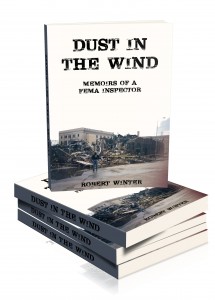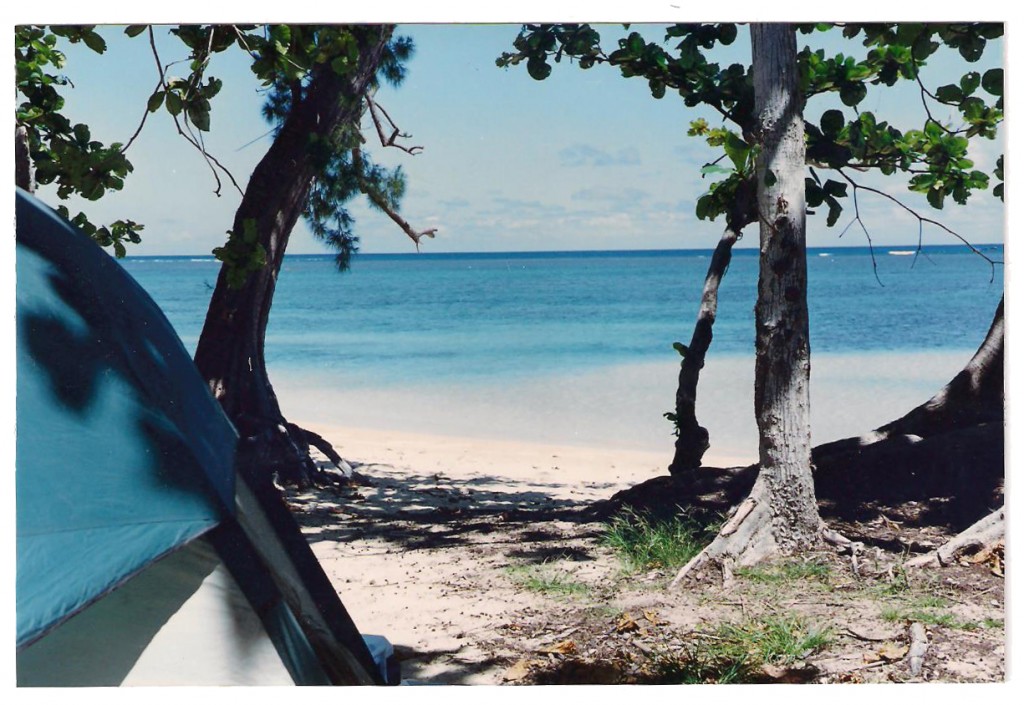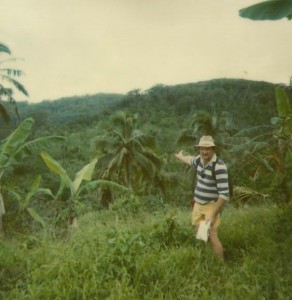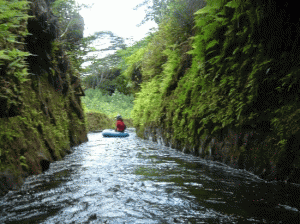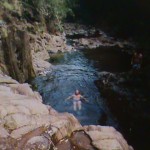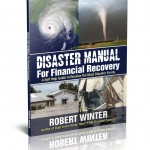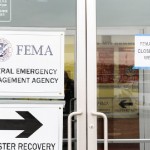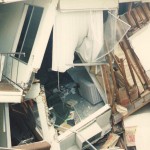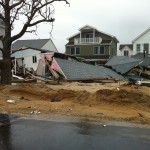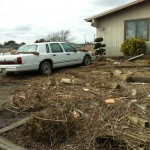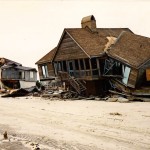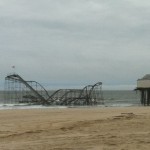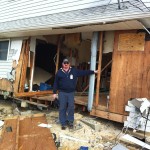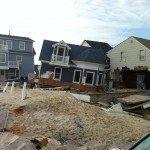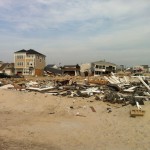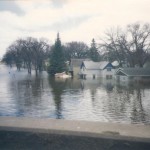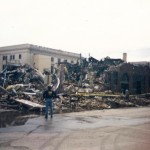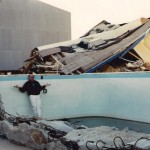Archive by Author
News
Hey! Go to ezines.com to view the article one of my friends is referring to! El Nino: What Is It and Why Is It So Important?
|
||||||||||||||||||||||||||
Disaster Recovery Manual: A Self Help Guide to Receive the Most Disaster Funds is out now in bookstores!
NewsAs a 25-year veteran #FEMAinspector, I’ve heard this thousands of times, “I paid my insurance company for 40 years and never knew I wasn’t cover for this!” Don’t find yourself in a similar predicament when part or all of your personal property and home is destroyed by a disaster.
Disaster Recovery Manual: A Self Help Guide to Receive the Most Disaster Funds provides little known tips and tricks on how to receive assistance as fast as possible along with other information your insurance company doesn’t want you to know about. It also provides helpful information to assist you in choosing an insurance policy BEFORE a disaster occurs.
If you live in a disaster prone area, pick up a copy of this tell-all book that guides you through the process of handling FEMA and your insurance company after a disaster. It’s now available on Amazon.com, Smashwords.com, Apple, Barnes & Noble and other online bookstores.
Is FEMA Ready for the Next Katrina?
NewsIs FEMA Ready for the Next Katrina?
Everyone remembers the disaster of Hurricane Katrina and all of the deaths and issues that followed. While it’s impossible to stop hurricanes and other natural disasters, it is possible to improve the way that the government responds to and handles them. Without a doubt, they handled #HurricaneKatrina poorly. The country and FEMA vowed that they would not let something like that happen again by putting in place a better infrastructure and better logistics to ensure that it doesn’t. They started to develop a new and better system in hopes to improve their response time and start getting help to victims as quickly as they can.
FEMA Still Floundering
The new system was supposed to take care of issues they faced a decade ago. They’ve had 10 years to work on the problem with other disasters to test them along the way. Yet, they admit that the new system is still undergoing work. There’s the chance that the new system might not work as well as hoped.
Thus far, they’ve spent close to $250 million on revamping the plan, trying to make sure they have enough supplies and a fast enough system of getting help to people to reduce the effects if a disaster-sized Katrina occurred again. Now it’s said they’re not certain their plan will be effective. This comes directly from the Department of Homeland Security’s inspector general.
FEMA, part of the Department of Homeland Security, was the center of controversy after Katrina. They couldn’t handle the amount of help required of them for residents in Alabama, Louisiana and Mississippi. Their new system was supposed to automate and make the distribution of relief easier. The hope is that they will be able to deliver emergency supplies faster, which can help to save lives and make survivors’ lives a little easier.
The system tracks more than just supplies that are coming from FEMA though. The system will track those from other agencies as well as state, local, and even tribal governments. It can even track supplies from nongovernment organizations and those that come from the private sector. Ideally, this would give them an idea of what they had and where it was going at all times. In theory, it would make handling larger disasters easier.
Here’s the rub though. The officials from FEMA said that the system was up and in place, and even running smoothly in January of 2013. The auditors who looked into this did not find that. In fact, they saw that the system was close to 19 months behind schedule – more than a year and a half!
It doesn’t do anything that they claimed. Namely, it isn’t able to work with the logistics management system of those aforementioned partners, so they have no real-time information about supplies nor where they might be.
The system is still not up and running. This means if another disaster the size of Katrina happened, or even a smaller one, they will not be able to handle it. Chances are they’ll need more money in order to complete the project.
You Might Be on Your Own
When you’re facing a disaster, there’s a chance you’ll be on your own for a while. Help from the government might be some time in coming, and maybe it just won’t come at all. You need to be ready to fend for yourself and your family. After Hurricane Iniki, many people in Kauai swore they’d never live like that again after a disaster, so they built bomb shelters with weeks of supplies and generators.
Resouce: http://www.washingtonexaminer.com/ig-says-fema-cant-be-sure-new-logistics-system-will-work-in-next-katrina/article/2555000
Second Edition of Dust in the Wind just released!
NewsI’m grateful to all of the readers out there who purchased my first book. Now, due to its success, a second edition was just released last week that contains more photos than the original book. It can be purchased on this website, on Smashwords.com, Apple and in Barnes & Noble bookstores. Thanks to everyone for your support! Robert Winter
When They Tell You to Evacuate – Do It!
Disaster TipsYou’ve all seen it on the news. Every time we have a disaster in the country, from a volcanic eruption to a hurric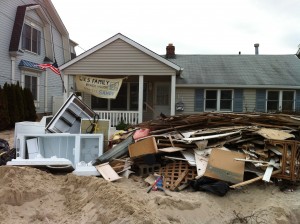 ane, some individuals simply refuse to leave their home and evacuate. Many do not feel that the disaster will be as dangerous or as damaging as it could be. Others don’t trust the authorities that tell them to evacuate. Some worry about leaving their home for looters. Many simply have nowhere to go, so they stay in the only place they know.
ane, some individuals simply refuse to leave their home and evacuate. Many do not feel that the disaster will be as dangerous or as damaging as it could be. Others don’t trust the authorities that tell them to evacuate. Some worry about leaving their home for looters. Many simply have nowhere to go, so they stay in the only place they know.
However, it is highly dangerous to stay. When the authorities tell you that it is time to evacuate, they are not doing it just for a power trip. They are doing it because you and your loved ones actually are in danger.
The Dangers of Staying During a Disaster
What dangers do those who decide to stay face? First, they face the dangers of the immediate disaster. If there is a flood, they face the danger of drowning. If there is a fire, they face the danger of burning. When you stay… you and anyone staying with you faces death during the disaster.
However, things do not suddenly turn better once that initial danger is over. After the disaster, there is contaminated water, downed power lines, looters and a host of other issues that could plague you. Even disease, dehydration or starvation could kill you if the authorities are unable to help you in time.
Think about this as well. When you stay after they’ve told you to evacuate, you are putting others at risk, not just yourself. The authorities and rescue workers that have to come and save you could have injuries or even die in the process. If people are on their way to help you, it means you are also taking resources away from other people who need it.
Do not do this to yourself or your loved ones. When they tell you that it’s time to go, then do it. I can’t tell you how many times victims who did stay and lived to tell about it say they will never ever do that again.
Creating an #EvacuationPlan Now
You need to make sure that you have a good evacuation plan in place. Create a plan for you and your family on where you will meet and how you will contact one another once you reach your destination.
Make sure you always have gas in the car. Try to keep the tank at least half-full just in case you need to evacuate and you don’t have the time to stop and get gas when you leave. Many times, gas stations will be closed anyway.
If You Get Separated
There are plenty of websites as well as friends, neighbors, county and city officials that can get you back together with your family. Once you are able to get to a computer, phone, etc., have a plan if you get separated. Stay calm. With today’s technology, you won’t be alone long.
Leave as early as you can after the evacuation order so you don’t have to face the throngs of people that wait until the last minute. Always make sure to take emergency supplies with you in the vehicle as well as a weather radio, pets, extra food and water, and other essentials. It might be a few days or longer before you can get back into your home, so the more comforts you can bring with you the better. Additionally, have some cash on hand, as credit card machines and ATMs could be out of order when you leave.
Watch This Video to Learn More About Dust in the Wind: #RealFEMA Disaster Stories
The BookDa plane! Da TV! A FEMA “necessity”
The Book Travel TipsI can’t live without the TV show Survivor. As you know from the stories in my book, I have had some experiences in American Samoa and in the Bayou of the deep American south that could qualify me for this show and have given me some useful survival skills. Enough so that when I watch the show, I can’t believe how dumb these people are!
TV is an important thing in life. I enjoy it, certainly, but did you know that FEMA considers your television set a basic living necessity? What TV show can’t you live without?
Speaking of television, and back to the #AlohaSpirit of stopping-to-smell-the-roses in Kauai point of all this, another spot you must see is “Tattoo Falls.” Anyone who was old enough to watch Fantasy Island in the 1970’s will remember this line, “Da plane, da plane!” They will also remember those beautiful waterfalls that “da plane” circled around during the opening credits of the show. These are found on the island of Kauai. Driving through cane fields, you see the random signs for these falls and a quick walk from a parking area brings you to the ridge that looks out over them. They are a must see.
Death & Taxes, FEMA & Fraud
The BookWhen you’re saying your prayers during and after a disaster, don’t forget the part where it says, “lead us not into temptation.” It seems too many folks are led into temptation when it comes to thinking they can get more money out of the federal government in times of disaster. In my book, I talk about ways people have tried to put one over on me and other inspectors. I also provide details about what you can and can’t use #FEMAfunds for. (Hint: You can’t use it to have a diamond embedded in your tooth.)
Don’t think you can get more money from FEMA by exaggerating the extent of your damages or working a deal with a CFI. Fraud from Hurricanes Katrina and Rita totaled more than one billion dollars. Even with the established penalties of a quarter-million dollars in fines, jail time, or both, fraudsters still take chances. Because of the enormity of the fraud in these hurricanes, the National Center for Disaster Fraud was started. This group relentlessly pursues open cases, and it may take them years but someone who made a fraudulent claim will be pursued to the greatest extent possible. You might not even know you’ve been discovered until you file annual income tax and receive a letter informing you that all future tax refunds are being withheld.
The fallout from Hurricane Sandy is still being painfully felt by New Yorkers who are being faced with demands for the return of their FEMA money. See more in this NY Post article from the last quarter of 2014.
And check out this NJ woman’s story.
Don’t find yourself delivered into evil. Fraud hurts everybody but no one worse than yourself.
God Bless America.
What do Pig Farms, Wild Boars, Kauai Caves have in common?
The Book Travel TipsIf you read my book, you know that pigs and I have a history. Oh man, those shoes! And all that fatback!!
Well, on a sort of related note, what do you think about wild boars? They are nothing to mess with. I went on a hunting trip for boars with nothing but a spear and a knife. Not for everyone!
Here’s another question for you. What do you think about caves? Ha!
Well, I know that boars and caves may be things that some people are afraid of, but if you’re like me and not afraid of too much, you should head over to Haena Beach Park on Kauai. Haena Beach Park is the home of the Maniniholo Dry Cave and the Waikanaloa Wet Cave. Both are worth a visit, and you can enjoy some great hiking in this park too. Just pay attention to the warnings about boars and look out if you see one because they don’t mess around.
What do Pig Farms, Wild Boars and #KauaiCaves have in common? Nada. Except they’ve all been a part of my adventures.
Mike Solomovici Book Endorsement
Book EndorsementsIt was January 1994 and the jolt woke us with a start. Earthquake…a big one! We leaped out of bed. I remember the noise, the total confusion and the pain as our china cabinet struck me on the back and broken glass went everywhere. I remember seeing that my girlfriend had taken a hit from a lamp and was already showing a huge knot on her head. We had to struggle to open the door because the building was literally collapsing and warping around us. We screamed for our neighbors to help us, and together we got the door to open.
For the next few minutes, everything is chaos in my memory, and then we were in the parking lot. No more screaming, no more terror of a building coming down on us, and clearly no more home to go to.
Barefoot, bleeding and wearing only sweatpants, I realized we needed medical care. At the hospital, we were turned away because we weren’t critical. I could see that the nurses weren’t lying. It was a nightmare.
Heading to my sister’s home, our hopes were dashed when we saw she had lost everything too. The only place for us was the bare lot, a collection of grass and dirt, across the street from her home. We camped there for the next three days, and thankfully the people who did not suffer total losses helped us out.
Without their first aid supplies, water, clothing, food and even their barbecue, we would never had made it through. These people were truly a godsend.
And then what? I waited for three weeks after my FEMA inspection [where the inspector was clearly incompetent] to receive my letter for relocation assistance. I was declined. I was declined even though the building was “red tagged” and collapsed!
I wish there was a book like this back then! I could have read it to educate myself about how FEMA worked, and may have spared myself some major headaches. It would have been real helpful to know before an earthquake that I should have secured the china cabinet to the wall, never hang pictures over my bed and so much more.
If I had Robert’s book, I would have known how to deal with #FEMAinspectors and even FEMA itself. Instead of housing assistance alone, I would have known how to appeal and to get money for my personal property. I would have kept every receipt, deducted losses from my taxes and so much more.
Don’t be a “shoulda, woulda, coulda” person like me. Buy this book, use the advice on every page, and prepare yourself for disasters and the even worse disasters that sometimes follow.
#northridgequake
Hanamaulu Park and the roots of #C4DR charity
News The BookAfter Hurricane Iniki hit Kauai in September of 1992, there were many families left homeless because their homes had been entirely destroyed. Many of these folks spent months in temporary spots and then in tents. They were forced to use outhouses and eat from campfires or at the disaster relief centers. And believe it or not, come December, I was still going to visit tent cities to search for people in order to complete FEMA inspection  paperwork. This is how I found myself at the Hanamaulu Park tent city one morning. It had been raining for days and days and 100 or so households remained at this site because they had nowhere else to live.
paperwork. This is how I found myself at the Hanamaulu Park tent city one morning. It had been raining for days and days and 100 or so households remained at this site because they had nowhere else to live.
I was walking around meeting up with folks when suddenly it occurred to me that these families would be in this tent city come this Christmas without anything. “Great,” I thought sarcastically to myself, “they’ll all have a delightful holiday season down here!” Suddenly, my inner Klinger-O’Reilly sprang to life. I could do something to improve their Christmas. I just knew I could! The wheels started to turn, and that was the first time it set in motion what would eventually develop into the idea for my C4DR organization.
Along my way, I have crossed paths with a few people who have tons of cash and charitable hearts. It was these people I reached out to in December of 1992, and they were willing to help me put together a Christmas for the families in #HanamauluPark. You can read more about this special Christmas (it is probably my favorite Christmas ever!) in my book.
Skip on over to my C4DR page and see if you’re not inspired to give to those suffering during disaster recovery.
Stop to Smell the Roses ~ Insider’s Travel Tips
Travel TipsThis is where you’ll soon be able to learn about excellent places to see and things to do in Kauai and other places Frecks has been. Stay tuned! #smelltheroses
What Happens When States Can’t Afford to Call in FEMA?
Disaster Tips In a true disaster, the governor of the state in which the disaster occurs will need to request federal help, and the President will need to declare a major disaster in the state and the county. This is the only way that residents of the area will be able to have any sort of disaster relief that comes from FEMA, even though they may have a number of local, county, and even state options for help right after the disaster takes place.
In a true disaster, the governor of the state in which the disaster occurs will need to request federal help, and the President will need to declare a major disaster in the state and the county. This is the only way that residents of the area will be able to have any sort of disaster relief that comes from FEMA, even though they may have a number of local, county, and even state options for help right after the disaster takes place.
What Is a Disaster According to the Government?
It is important to remember that what you and your neighbors might consider a disaster might not meet the federal requirements for being an actual disaster. For the government to allow federal assistance from FEMA, the disaster must be serious and affect a large number of people. Some of the most recent examples of declared disasters include #HurricaneKatrina and Hurricane Sandy. Typically, a disaster, according to the government, happens when hundreds of homes are destroyed or damaged at the same time and a large number of people are displaced from their houses and apartments.
If your area or county can’t meet the requirements of the federal government when it comes to a disaster, then you simply won’t receive help from FEMA.
How Do You Prepare for a Disaster That FEMA Can’t Help?
Sometimes, you will be on your own, even though you and your neighbors might feel that you are living in a disaster area. Instead of waiting for something like this to happen and being at a loss, you should take steps to prepare. One of the best things to do is get high quality insurance for your property. Homeowners insurance is important, as is renters insurance for those who don’t own.
However, look at the fine print of what these policies will and will not cover. Make sure they are able to cover a range of different disasters and that they do not have loopholes for “Acts of God” and the like. Make sure it covers things such as flood, quake damage, wildfires, etc. Insurance isn’t the best answer; it’s the only answer if there is no government assistance.
Look at Local Programs for Some Help
When you don’t have anywhere else to turn after your home is gone and it looks as though FEMA help won’t be coming through, you can turn to local programs. Many times local charities and churches will set up temporary shelters and be able to provide clothing, food and a warm place to stay for those who need it. These can be real lifesavers. Celebrities4DisasterRelief.com is my new foundation to help disaster victims.
It might be a good idea to consider looking at some of the local programs set up in your neighborhood right now just to have a better idea of where to turn when you need help. You could also get to know your neighbors better, so you have a network of people in the area that can help one another when the chips are down. When the government is not there to help, we need to be able to be there for one another.
Keep in mind that sometimes help from the government just takes some time. It might be a few days or longer before they actually declare the area a disaster. If they do, then you will be eligible for help from FEMA. You can visit their site, call them, or talk with representatives who will likely be in the area about what you need to do to get assistance from them.
Inexperienced, Incompetent or Impaired? The FEMA Inspector at Your Door
Disaster Tips The BookAfter a disaster, the FEMA inspector at your door might be inexperienced, incompetent or impaired.
I spend a lot of my book talking about how a contract #FEMAinspector (CFI) is a real human being taking time out of their real life to help you, most often with the best intentions and the most professional demeanor. But it is true, (as we saw in the aftermath of Hurricanes Katrina and Sandy) that the inspector at your door might sometimes be a bit more human than it is in your best interests.
You need to know that if you are worried about a FEMA inspector’s behavior or professionalism, if you fear you received a “kitchen inspection,” if your inspector seems to be lost through the process, you may be right. You have recourse. You can always appeal your inspection.
I encourage you to ask a few questions about the FEMA inspector’s background. “Did you do tornado (or relevant disaster) work in the past?” “How long have you been inspecting?” You have every right to know the truth about your CFI, and it is up to you to figure out whether or not they are doing the best job possible for you.
One of the major contractors had trained more than 90,000 CFIs and yet when Hurricane Sandy devastated New York and New Jersey, only 3,000 showed up. The high turnover rate for CFIs is a problem, and in the wake of each disaster, rookies have to be trained to handle the number of inspections. Many of the inspections done after Hurricane Sandy, for example, were done by rookies, and may have been substandard and are probably valid candidates for appeals from the applicants. I don’t know how many of the applications were appealed, but I doubt it was anywhere near the number that could have been easily challenged.
If you’d like to learn more about what to expect and what to watch out for when you open the door to a FEMA inspector, I have a chapter in my book devoted to this.
#traveltipstuesday – Tubing in Kauai
Travel TipsBack in 1993, my friends and I used to drive up to the end of the Wailua River where there was a deep pool to swim in and have fun. It’s also where one of the canals for the sugar cane water system starts. This canal diverts water from the river into the canal right there and goes around the corner of the mountain into a cave and comes out the other side back into the canal. It was real scary but we wanted to try to float through the cave and come out the other side. We thought a lot about how we could do it without drowning. So we floated a tennis ball at the mouth of the cave and had our friends look for it on the other side. When it came out on the other side of the mountain, we floated a bigger ball to see if it would make it through. We put a soccer ball and a beach ball through, and they all made it. Once in a while the ball would have some dirt or slime on it, so we knew it was hitting the ceiling or the walls as it floated through the cave. The really scary part? Rain in Kauai would raise the river really quickly as it rushed down the mountains.
Finally, the day came when I put all my scuba gear on and tied a rope around my waist and went for it. I had an underwater light with me. We picked a day when there wasn’t much rain, and luckily I made it to the other side of the mountain and lived to tell the tale! We thought we could get rich selling this ride, but our business plan kept getting shot down. We made it through the cave, but were dead in the water as far as making some money sharing this awesome ride with other people.
We were daredevils back then. They were still growing sugar cane in Kauai and someone still owned those canals. It was too risky!
But since then, they quit growing sugar cane and someone else managed to get the idea approved and that person is making money off of this awesome tubing adventure. Now, you can float in peace with no worries of drowning. It is all kosher and insured as far as I know.
“Witness Kauai’s spectacular engineering feats as you float down the tropical waterway consisting of open ditches, tunnels and flumes all of which were engineered and hand dug around 1870.” See more at this discount ticket site. #traveltips


